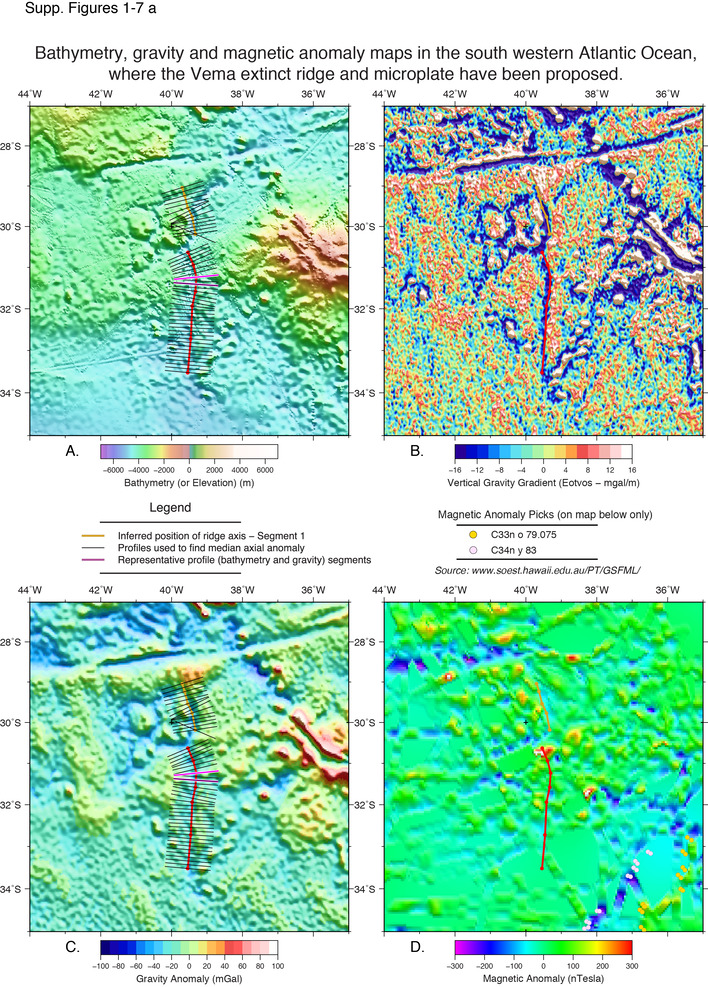| Ocean: | South Atlantic |
| Spreading centre type: | Possibly an extinct microplate spreading centre |
| Time of cessation: | 92.5 Ma, Chron C34 (Pérez-Díaz and Eagles 2014) |
| Subsequent active spreading center: | Present-day Mid-Atlantic Ridge |
| Cessation style: | Not constrained |
| Later deformation/volcanism | : Significant volcanism is evident to the east, yet it is unclear whether any deformation has occurred at the site of the Vema Channel |
An extinct ridge origin has been recently suggested for the Vema Channel, which is a shallow trough offshore the Brazilian coast (Pérez-Díaz and Eagles, 2014). This has been argued on the basis of an 800 km crustal asymmetry within Cretaceous Quiet Zone oceanic crust in the western South Atlantic Ocean. Pérez-Díaz and Eagles' (2014) observation is supported by a linear gravity low at the channel and there is some evidence of an oblique pseudofault at the southeastern perimeter of the crust that is argued to have been captured prior to a ridge jump to the east. However, the region is complicated by proximity to the Rio Grande plateau and an enigmatic, linear gravity low that crosscuts the ocean floor trending NW-SE at the eastern boundary of the suspected captured crust.
The trigger for a reorganization of the South Atlantic plate boundaries is not discussed with the review of Pérez-Díaz and Eagles (2014). It is possible that the Tristan Hotspot was active at the time of cessation of spreading within the Vema Chanel and may have played a role. A positive gravity anomaly directly to the east of the center may reflect significant volcanic activity around the time of the reorganization.
The Vema Channel is a 600-800m deep bathymetric trough. A free-air low gravity anomaly is evident about the structure that is around 25 mGals from peak to trough and has a half-width of 20 km, which is not dissimilar to better-defined extinct spreading centers. There is reasonable evidence to conclude that the Vema Chanel is an extinct ridge and it was considered within our secondary tier analysis, although the morphology of the trough is distinct from that of many other extinct ridges. The southern segment of the trough is reasonably asymmetric in profile and thus appears more akin to a transform fault. Additionally, both segments have a short wavelength gravity low superimposed on a broader positive anomaly. In the case of the southern segment the flanks of the trough become more shallow with greater distance from the ridge.
Pérez-Díaz, L. and Eagles, G. 2014, Constraining South Atlantic growth with seafloor spreading data, Tectonics, v. 33, p. 1848-1873, doi: 10.1002/2014TC003644.


